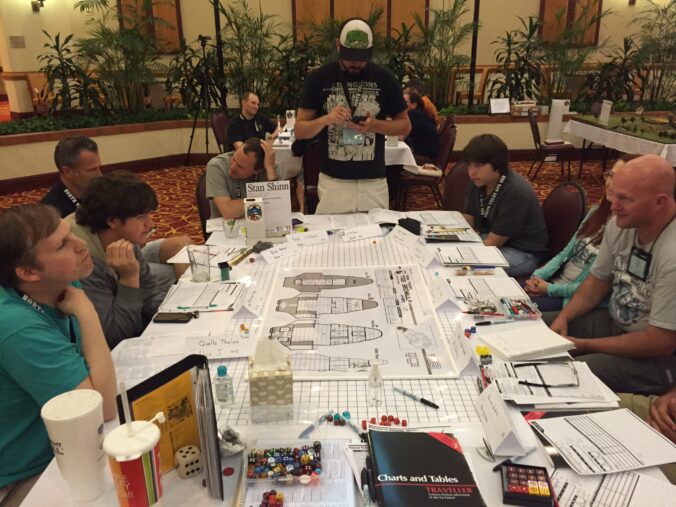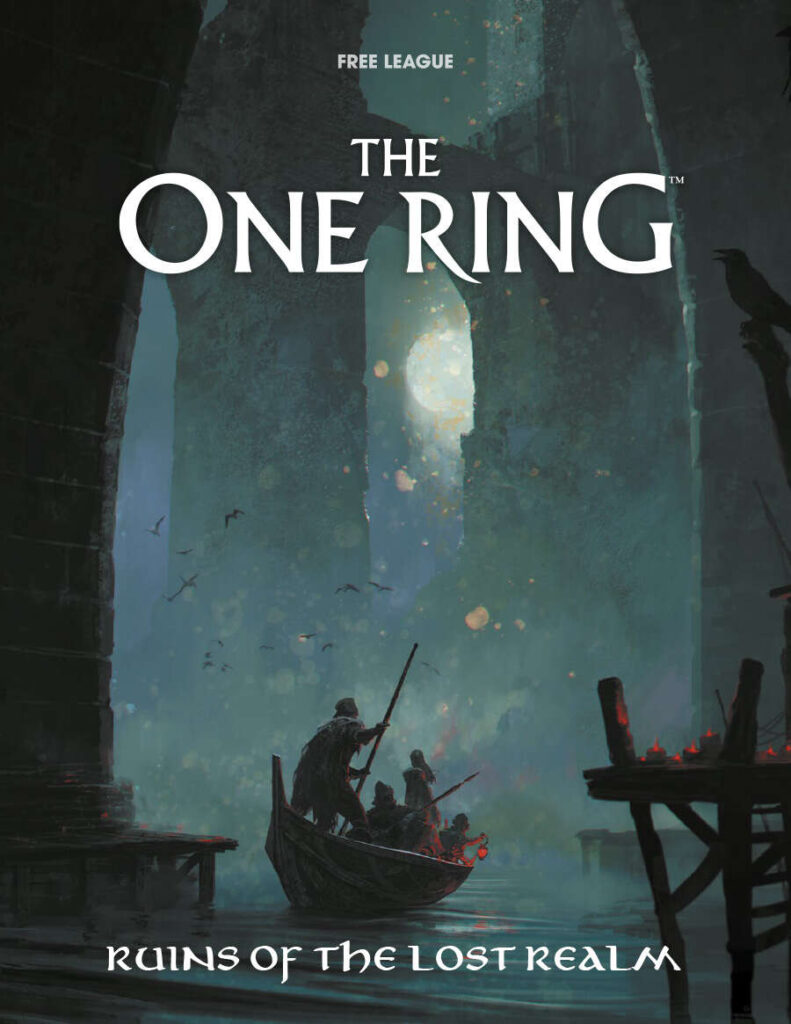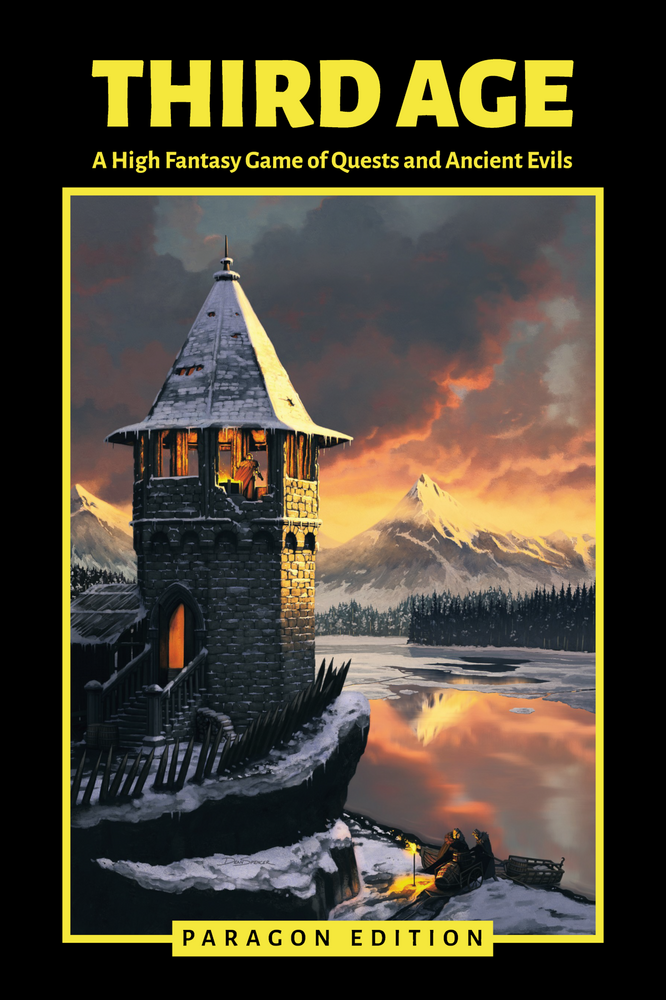Running a tabletop RPG at a convention can be an absolute blast. Most con games run about four hours, but sometimes you’ve only got three. That’s just enough time for an epic, fast-paced adventure… if you plan it right. Here’s how to keep the game tight, fun, and on schedule.
Pacing: The Secret Sauce of a 3-Hour Game
A typical four-hour convention game runs four to six major scenes—big moments of roleplaying, combat, or exploration. For a three-hour game, trim it down to three or four major scenes at about 40 minutes each. That leaves some wiggle room for a brief mid-game break, which your players (and your voice) will thank you for.
Skip the Small Talk—Drop ‘Em In!
Many published adventures (like D&D Adventurers League modules) assume a four-hour session with a slow build-up. But in a three-hour game, you don’t have time for 20 minutes of tavern chatter and exposition. Instead, go full action movie—drop players in media res (aka “right in the middle of things”).
For example, instead of spending time on setup like:
“You all meet at the Adventurers’ Guild, where a mysterious old wizard tells you about a terrible danger—”
Try something like:
“The Adventurers’ Guild sent you to stop a powerful artifact from falling into the wrong hands. You tracked it to an abandoned temple—only to find it wasn’t so abandoned after all. The doors slam shut behind you. The chanting grows louder. A shadowy figure stands before the altar, holding the artifact aloft… Roll for initiative!”
This jumpstart gets players engaged instantly and cuts down on slow early scenes.
Ending on Time (or: How to Cheat Fate)
Con games must end on time. There’s another game in the next time slot, and your players will need to pack up and move to the next game table. So how do you keep things from dragging? Plan your escape route.
1. The 90-Minute Checkpoint
At 90 minutes left, assess where you are. If you’re not close to the final confrontation, consider cutting a middle scene or fast-tracking the players toward the climax.
2. The 60-Minute Rule
At one hour left, you should be entering the final battle or climactic scene. If you’re still two rooms away from the Big Bad, it’s time for a fast-forward moment— cue the Trigger Event.
3. Trigger Events: Time-Saving Magic Tricks
A trigger event is a narrative shortcut to push players straight into the final confrontation. Some examples:
- Dungeon Shortcut: “The next door opens… and it’s the boss fight!” (Yes, even if they skipped three rooms; you can modify the map on the fly and they’ll never know.)
- The Heist Goes Wrong: “You’ve been careful, but the guards just spotted you. The alarm blares—GO!”
- The Dragon Arrives Early: “You were tracking the beast for hours… but now, it’s found you.”
If you sense the clock ticking down, fire off a trigger event to steer things toward the big finish.
Going to Narration: The Final Shortcut
Sometimes, the end of a battle is inevitable. If it’s clear that the players will win, don’t waste precious minutes rolling out the final turns. Instead, say:
“At this point, it’s clear you’re going to take down the enemy—so let’s go to narration!”
Set the dice aside and become a story-teller. This allows you to summarize the climactic victory, keeping the momentum high while avoiding slow, mechanical dice rolls. The same technique works for wrapping up the adventure:
- The party’s triumphant return to civilization
- The epilogue—who takes credit? Who vanishes into the night?
- A cliffhanger for a future adventure
Using narration at the right time gives a satisfying sense of closure without running over time.
Gear Up! (Or: Don’t Forget the Dice)
A good con GM packs like a pro. Here’s an example checklist:
- Extra dice (because someone always forgets)
- Pencils & character sheets (because players never bring them)
- Pre-gen characters (unless your game has super fast character creation rules)
- Name tents (write BIG and on both sides so everyone can see)
- Battle mat & minis/tokens (if using maps)
- Wet-erase markers (for name tents & maps)
Pro tip: If you need loaner supplies, ask the host ahead of time—many GMs have extras.
Helping New Players Feel Welcome
At cons, you’ll often have players brand new to the system. Keep things light and fun.
- Don’t fixate on they getting the rules right. They’re here to play, not take a course. Point out the basics, but don’t sweat the small stuff.
- Don’t lookup rules in play. If a rules comes up at the table that you don’t know, give a quick ruling and say, “We can check the exact rule during the break.” Momentum is king.
- Encourage table camaraderie. Most players are happy to help a newbie. Maybe pair up a new player with a veteran gamer sitting next to them.
100,000 Players Generally Have Fun Regardless Of The GM
GM’s are generally hard on themselves; maybe nervous before a game, and second guessing themselves afterwards. But check out this stat from 100,000 convention games.
I asked David Christ at Baldman Games about this topic. Dave has facilitated tens of thousands of games run by hundreds of GMs at hundreds of conventions for decades. He gets surveys on each of these games – over one hundred thousand of them – and had two main points towards this conversation:
- He still has too few GMs to run all the games players want to play.
- Satisfaction scores given by players about the games he manages average 92%.
You’re doing players a HUGE favor by running a game. Players are not nearly as hard on the GM as you are on yourself. Relax and realize people are just happy to hang out and sling some dice around. They will likely have a great time no matter how you run the game.
Final Thought: Fun First, Rules Second
At the end of the day, a convention game is about having a great time. The goal is to introduce players to the game and each other, not to run the most technically perfect session ever.
So grab your dice, set your scenes, and when in doubt, drop a dragon on ‘em.


